《数字视频处理》
| 作者 | (美)(A.M.泰卡尔普)A.Murat Tekalp著 编者 |
|---|---|
| 出版 | 北京:清华大学出版社 |
| 参考页数 | 528 |
| 出版时间 | 1998(求助前请核对) 目录预览 |
| ISBN号 | 730202927X — 求助条款 |
| PDF编号 | 87253258(仅供预览,未存储实际文件) |
| 求助格式 | 扫描PDF(若分多册发行,每次仅能受理1册) |
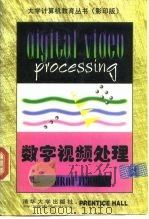
Ⅰ REPRESENTATION OF DIGITAL VIDEO1
1 BASICS OF VIDEO1
1.1 Analog Video1
1.1.1 Analog Video Signal2
1.1.2 Analog Video Standards4
1.1.3 Analog Video Equipment8
1.2 Digital Video9
1.2.1 Digital Video Signal9
1.2.2 Digital Video Standards11
1.2.3 Why Digital Video?14
1.3 Digital Video Processing16
Preface17
About the Author19
2 TIME-VARYING IMAGE FORMATION MODELS19
2.1 Three-Dimensional Motion Models20
2.1.1 Rigid Motion in the Cartesian Coordinates20
About the Notation21
2.1.2 Rigid Motion in the Homogeneous Coordinates26
2.1.3 Deformable Motion27
2.2 Geometric Image Formation28
2.2.1 Perspective Projection28
2.2.2 Orthographic Projection30
2.3.1 Lambertian Reflectance Model32
2.3 Photometric Image Formation32
2.3.2 Photometric Effects of 3-D Motion33
2.4 Observation Noise33
2.5 Exercises34
3 SPATIO-TEMPORAL SAMPLING36
3.1 Sampling for Analog and Digital Video37
3.1.1 Sampling Structures for Analog Video37
3.1.2 Sampling Structures for Digital Video38
3.2 Two-Dimensional Rectangular Sampling40
3.2.1 2-D Fourier Transform Relations41
3.2.2 Spectrum of the Sampled Signal42
3.3 Two-Dimensional Periodic Sampling43
3.3.1 Sampling Geometry44
3.3.2 2-D Fourier Transform Relations in Vector Form44
3.3.3 Spectrum of the Sampled Signal46
3.4 Sampling on 3-D Structures46
3.4.1 Sampling on a Lattice47
3.4.2 Fourier Transform on a Lattice47
3.4.3 Spectrum of Signals Sampled on a Lattice49
3.4.4 Other Sampling Structures51
3.5 Reconstruction from Samples53
3.5.1 Reconstruction from Rectangular Samples53
3.5.2 Reconstruction from Samples on a Lattice55
3.6 Exercises56
4 SAMPLING STRUCTURE CONVERSION57
4.1 Sampling Rate Change for 1-D Signals58
4.1.1 Interpolation of 1-D Signals58
4.1.2 Decimation of 1-D Signals62
4.1.3 Sampling Rate Change by a Rational Factor64
4.2 Sampling Lattice Conversion66
4.3 Exercises70
Ⅱ TWO-DIMENSIONAL MOTION ESTIMATION72
5 OPTICAL FLOW METHODS72
5.1 2-D Motion vs.Apparent Motion72
5.1.1 2-D Motion73
5.1.2 Correspondence and Optical Flow74
5.2 2-D Motion Estimation76
5.2.1 The Occlusion Problem78
5.2.2 The Aperture Problem78
5.2.3 Two-Dimensional Motion Field Models79
5.3 Methods Using the Optical Folw Equation81
5.3.1 The Optical Flow Equation81
5.3.2 Second-Order Differentail Methods82
5.3.3 Block Motion Model83
5.3.4 Horn and Schunck Method84
5.3.5 Estimation of the Gradients85
5.3.6 Adaptive Methods86
5.4 Examples88
5.5 Exercises93
6 BLOCK-BASED METHODS95
6.1 Block-Motion Models95
6.1.1 Translational Block Motion96
6.1.2 Generalized/Deformable Block Motion97
6.2 Phase-Correlation Method99
6.2.1 The Phase-Correlation Function99
6.2.2 Implementation Issues100
6.3 Block-Matching Method101
6.3.1 Matching Criteria102
6.3.2 Search Procedures104
6.4 Hierarchical Motion Estimation106
6.5 Generalized Block-Motion Estimation109
6.5.1 Postprocessing for Improved Motion Compensation109
6.5.2 Deformable Block Matching109
6.6 Examples112
6.7 Exercises115
7 PEL-RECURSIVE METHODS117
7.1 Displaced Frame Difference118
7.2 Gradient-Based Optimization119
7.2.1 Steepest-Descent Method120
7.2.2 Newton-Raphson Method120
7.3 Steepest-Descent-Based Algorithms121
7.2.3 Local vs.Global Minima121
7.3.1 Netravali-Robbins Algorithm122
7.3.2 Walker-Rao Algorithm123
7.3.3 Extension to the Block Motion Model124
7.4 Wiener-Estimation-Based Algorithms125
7.5 Examples127
7.6 Exercises129
8 BAYESIAN METHODS130
8.1 Optimization Methods130
8.1.1 Simulated Annealing131
8.1.2 Iterated Conditional Modes134
8.1.4 Highest Confidence First135
8.1.3 Mean Field Annealing135
8.2 Basics of MAP Motion Estimation136
8.2.1 The Likelihood Model137
8.2.2 The Prior Model137
8.3 MAP Motion Estimation Algorithms139
8.3.1 Formulation with Discontinuity Mode?139
8.3.2 Estimation with Local Outlier Rejection146
8.3.3 Estimation with Region Labeling147
8.4 Examples148
8.5 Exercises150
9 METHODS USING POINT CORRESPONDENCES152
Ⅲ THREE-DIMENSIONAL MOTION ESTIMATION AND SEGMENTATION152
9.1 Modeling the Projected Displacement Field153
9.1.1 Orthographic Displacement Field Model153
9.1.2 Perspective Displacement Field Model154
9.2 Methods Based on the Orthographic Model155
9.2.1 Two-Step Iteration Method from Two Views155
9.2.2 An Improved Iterative Method157
9.3 Methods Based on the Perspective Model158
9.3.1 The Epipolar Constraint and Essential Parameters158
9.3.2 Estimation of the Essential Parameters159
9.3.3 Decomposition of the E-Matrix161
9.3.4 Algorithm164
9.4 The Case of 3-D Planar Surfaces165
9.4.1 The Pure Parameters165
9.4.2 Estimation of the Pure Parameters166
9.4.3 Estimation of the Motion and Structure Parameters166
9.5 Examples168
9.5.1 Numerical Simulations168
9.5.2 Experiments with Two Frames of Miss America173
9.6 Exercises175
10 OPTICAL FLOW AND DIRECT METHODS177
10.1 Modeling the Projected Velocity Field177
10.1.1 Orthographic Velocity Field Model178
10.1.2 Perspective Velocity Field Model178
10.1.3 Perspective Velocity vs.Displacement Models179
10.2 Focus of Expansion180
10.3 Algebraic Methods Using Optical Flow181
10.3.1 Uniqueness of the Solution182
10.3.2 Affine Flow182
10.3.3 Quadratic Flow183
10.3.4 Arbitrary Flow184
10.4 Optimization Methods Using Optical Flow186
10.5 Direct Methods187
10.5.1 Extension of Optical Flow-Based Methods187
10.5.2 Tsai-Huang Method188
10.6 Examples190
10.6.1 Numerical Simulations191
10.6.2 Experiments with Two Frames of Miss America194
10.7 Exercises196
11 MOTION SEGMENTATION198
11.1 Direct Methods200
11.1.1 Thresholding for Change Detection200
11.1.2 An Algorithm Using Mapping Parameters201
11.1.3 Estimation of Model Parameters203
11.2 Optical Flow Segmentation204
11.2.1 Modified Hough Transform Method205
11.2.2 Segmentation for Layered Video Representation206
11.2.3 Bayesian Segmentation207
11.3 Simultaneous Estimation and Segmentation209
11.3.1 Motion Field Model210
11.3.2 Problem Formulation210
11.3.3 The Algorithm212
11.3.4 Relationship to Other Algorithms213
11.4 Examples214
11.5 Exercises217
12 STEREO AND MOTION TRACKING219
12.1 Motion and Structure from Stereo219
12.1.1 Still-Frame Stereo Imaging220
12.1.2 3-D Feature Matching for Motion Estimation222
12.1.3 Stereo-Motion Fusion224
12.1.4 Extension to Multiple Motion227
12.2 Motion Tracking229
12.2.1 Basic Principles229
12.2.2 2-D Motion Tracking232
12.2.3 3-D Rigid Motion Tracking235
12.3 Examples239
12.4 Exercises241
Ⅳ VIDEO FILTERING245
13 MOTION COMPENSATED FILTERING245
13.1 Spatio-Temporal Fourier Spectrum246
13.1.1 Global Motion with Constant Velocity247
13.1.2 Global Motion with Acceleration249
13.2.1 Sampling in the Temporal Direction Only250
13.2 Sub-Nyquist Spatio-Temporal Sampling250
13.2.2 Sampling on a Spatio-Temporal Lattice251
13.2.3 Critical Velocities252
13.3 Filtering Along Motion Trajectories254
13.3.1 Arbitrary Motion Trajectories255
13.3.2 Global Motion with Constant Velocity256
13.3.3 Accelerated Motion256
13.4.1 Motion-Compensated Noise Filtering258
13.4.2 Motion-Compensated Reconstruction Filtering258
13.4 Applications258
13.5 Exercises260
14 NOISE FILTERING262
14.1 Intraframe Filtering263
14.1.1 LMMSE Filtering264
14.1.2 Adaptive(Local)LMMSE Filtering267
14.1.3 Directional Filtering269
14.1.4 Median and Weighted Median Filtering270
14.2 Motion-Adaptive Filtering270
14.2.1 Direct Filtering271
14.2.2 Motion-Detection Based Filtering272
14.3 Motion-Compensated Filtering272
14.3.1 Spatio-Temporal Adaptive LMMSE Filtering274
14.3.2 Adaptive Weighted Averaging Filter275
14.4 Examples277
14.5 Exercises277
15 RESTORATION283
15.1 Modeling283
15.1.1 Shift-Invariant Spatial Blurring284
15.1.2 Shift-Varying Spatial Blurring285
15.2 Intraframe Shift-Invariant Restoration286
15.2.1 Pseudo Inverse Filtering286
15.2.2 Constrained Least Squares and Wiener Filtering287
15.3 Intraframe Shift-Varying Restoration289
15.3.1 Overview of the POCS Method290
15.3.2 Restoration Using POCS291
15.4 Multiframe Pestoration292
15.4.1 Cross-Correlated Multiframe Filter294
15.4.2 Motion-Compensated Multiframe Filter295
15.5 Examples295
15.6 Exercises296
16 STANDARDS CONVERSION302
16.1 Down-Conversion304
16.1.1 Down-Conversion with Anti-Alias Filtering305
16.1.2 Down-Conversion without Anti-Alias Filtering305
16.2 Practical Up-Conversion Methods308
16.2.1 Intraframe Filtering309
16.2.2 Motion-Adaptive Filtering314
16.3 Motion-Compensated Up-Conversion317
16.3.1 Basic Principles317
16.3.2 Global-Motion-Compensated De-interlacing322
16.4 Examples323
16.5 Exercises329
17 SUPERRESOLUTION331
17.1 Modeling332
17.1.1 Continuous-Discrete Model332
17.1.2 Discrete-Discrete Model335
17.2 Interpolation-Restoration Methods336
17.1.3 Problem Interrelations336
17.2.1 Intraframe Methods337
17.2.2 Multiframe Methods337
17.3 A Frequency Domain Method338
17.4 A Unifying POCS Method341
17.5 Examples343
17.6 Exercises346
Ⅴ STILL IMAGE COMPRESSION348
18 LOSSLESS COMPRESSION348
18.1 Basics of Image Compression349
18.1.1 Elements of an Image Compression System349
18.1.2 Information Theoretic Concepts350
18.2.1 Fixed-Length Coding353
18.2 Symbol Coding353
18.2.2 Huffman Coding354
18.2.3 Arithmetic Coding357
18.3 Lossless Compression Methods360
18.3.1 Lossless Predictive Coding360
18.3.2 Run-Length Coding of Bit-Planes363
18.3.3 Ziv-Lempel Coding364
18.4 Exercises366
19 DPCM AND TRANSFORM CODING368
19.1 Quantization368
19.1.1 Nonuniform Quantization369
19.1.2 Uniform Quantization370
19.2 Differential Pulse Code Modulation373
19.2.1 Optimal Prediction374
19.2.2 Quantization of the Prediction Error375
19.2.3 Adaptive Quantization376
19.2.4 Delta Modulation377
19.3 Transform Coding378
19.3.1 Discrete Cosine Transform380
19.3.2 Quantization/Bit Allocation381
19.3.3 Coding383
19.3.4 Blocking Artifacts in Transform Coding385
19.4 Exercises385
20 STILL IMAGE COMPRESSION STANDARDS388
20.1 Bilevel Image Compression Standards389
20.1.1 One-Dimensional RLC389
20.1.2 Two-Dimensional RLC391
20.1.3 The JBIG Standard393
20.2 The JPEG Standard394
20.2.1 Baseline Algorithm395
20.2.2 JPEG Progressive400
20.2.3 JPEG Lossless401
20.2.4 JPEG Hierarchical401
20.2.5 Implementations of JPEG402
20.3 Exercises403
21 VECTOR QUANTIZATION,SUBBAND CODING AND OTHER METHODS404
21.1 Vector Quantization404
21.1.1 Structure of a Vector Quantizer405
21.1.2 VQ Codebook Design408
21.1.3 Practical VQ Implementations408
21.2 Fractal Compression409
21.3 Subband Coding411
21.3.1 Subband Decomposition411
21.3.2 Coding of the Subbands414
21.3.3 Relationship to Transform Coding414
21.4 Second-Generation Coding Methods415
21.3.4 Relationship to Wavelet Transform Coding415
21.5 Exercises416
Ⅵ VIDEO COMPRESSION419
22 INTERFRAME COMPRESSION METHODS419
22.1 Three-Dimensional Waveform Coding420
22.1.1 3-D Transform Coding420
22.1.2 3-D Subbband Coding421
22.2 Motion-Compensated Waveform Coding424
22.2.1 MC Transform Coding424
22.2.2 MC Vector Quantization425
22.3 Model-Based Coding426
22.2.3 MC Subband Coding426
22.3.1 Object-Based Coding427
22.3.2 Knowledge-Based and Semantic Coding428
22.4 Exercises429
23 VIDEO COMPRESSION STANDARDS432
23.1 The H.261 Standard432
23.1.1 Input Image Formats433
23.1.2 Video Multiplex434
23.1.3 Video Compression Algorithm435
23.2 The MPEG-1 Standard440
23.2.1 Features440
23.2.2 Input Video Format441
23.2.3 Data Structure and Compression Modes441
23.2.4 Intraframe Compression Mode443
23.2.5 Interframe Compression Modes444
23.2.6 MPEG-1 Encoder and Decder447
23.3 The MPEG-2 Standard448
23.3.1 MPEG-2 Macroblocks449
23.3.2 Coding Interlaced Video450
23.3.3 Scalable Extensions452
23.3.4 Other Improvements453
23.3.5 Overview of Profiles and Levels454
23.4 Software and Hardware Implementations455
24 MODEL-BASED CODING457
24.1 General Object-Based Methods457
24.1.1 2-D/3-D Rigid Objects with 3-D Motion458
24.1.2 2-D Flexible Objects with 2-D Motion460
24.1.3 Affine Transformations with Triangular Meshes462
24.2 Knowledge-Based and Semantic Methods464
24.2.1 General Principles465
24.2.2 MBASIC Algorithm470
24.2.3 Estimation Using a Flexible Wireframe Model471
24.3 Examples478
25 DIGITAL VIDEO SYSTEMS486
25.1 Videoconferencing487
25.2 Interactive Video and Multimedia488
25.3 Digital Television489
25.3.1 Digital Studio Standards490
25.3.2 Hybrid Advanced TV Systems491
25.3.3 All-Digital TV493
25.4 Low-Bitrate Video and Videophone497
25.4.1 The ITU Recommendation H.263498
25.4.2 The ISO MPEG-4 Requirements499
APPENDICES502
A MARKOV AND GIBBS RANDOM FIELDS502
A.1 Definitions502
A.1.1 Markov Random Fields503
A.1.2 Gibbs Random Fields504
A.2 Equivalence of MRF and GRF505
A.3 Local Conditional Probabilities506
B BASICS OF SEGMENTATION508
B.1 Thresholding508
B.1.1 Finding the Optimum Threshold(s)509
B.2 Clustering510
B.3 Bayesian Methods512
B.3.1 The MAP Method513
B.3.2 The Adaptive MAP Method515
B.3.3 Vector Field Segmentation516
C KALMAN FILTERING518
C.1 Linear State-Space Model518
C.2 Extended Kalman Filtering520
1998《数字视频处理》由于是年代较久的资料都绝版了,几乎不可能购买到实物。如果大家为了学习确实需要,可向博主求助其电子版PDF文件(由(美)(A.M.泰卡尔普)A.Murat Tekalp著 1998 北京:清华大学出版社 出版的版本) 。对合法合规的求助,我会当即受理并将下载地址发送给你。
高度相关资料
-

- 数字信号处理
- 1994 西安:西北工业大学出版社
-
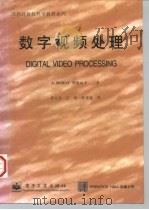
- 国外计算机科学教材系列 数字视频处理
- 1998年07月第1版 电子工业出版社
-

- 数字信号处理
- 电讯工程学院
-
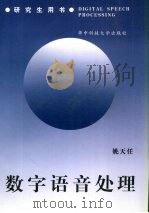
- 数字语音处理
- 1999 武汉:华中理工大学出版社
-
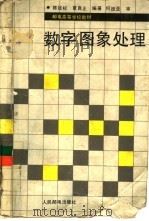
- 数字图象处理
- 1990 北京:人民邮电出版社
-
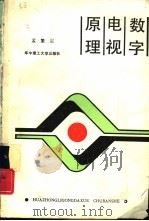
- 数字电视原理
- 1988 武汉:华中理工大学出版社
-

- 数字电视原理
- 1987 北京:科学出版社
-
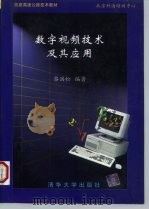
- 数字视频技术及其应用
- 1997 北京:清华大学出版社
-
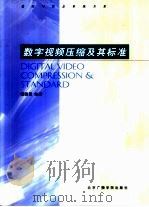
- 数字视频压缩及其标准
- 1999 北京:北京广播学院出版社
-
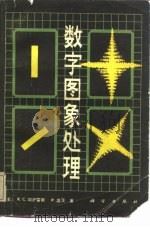
- 数字图象处理
- 1981 北京:科学出版社
-

- 数字声音处理
- 1993 北京:人民邮电出版社
-
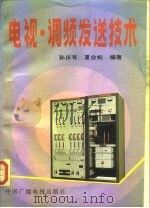
- 电视·调频发送技术
- 1992 北京:中国广播电视出版社
-
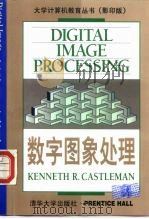
- 数字图象处理
- 1998 北京:清华大学出版社
-
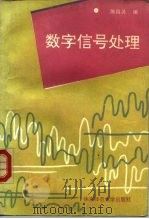
- 数字信号处理
- 1993 上海:华东师范大学出版社
提示:百度云已更名为百度网盘(百度盘),天翼云盘、微盘下载地址……暂未提供。➥ PDF文字可复制化或转WORD
